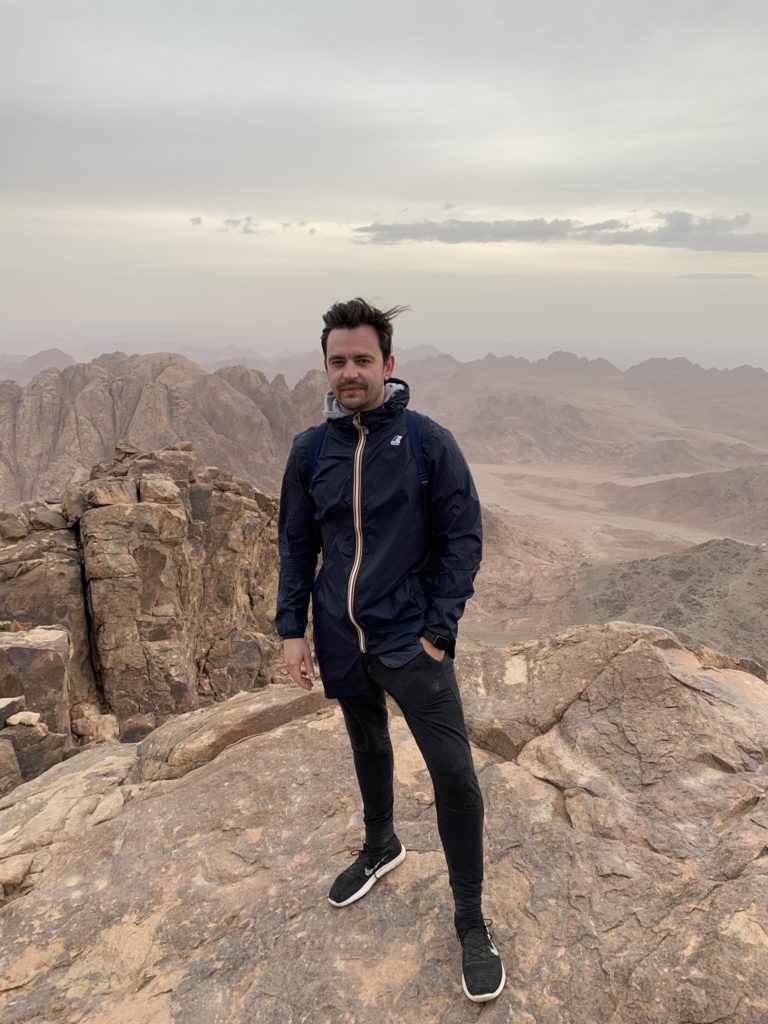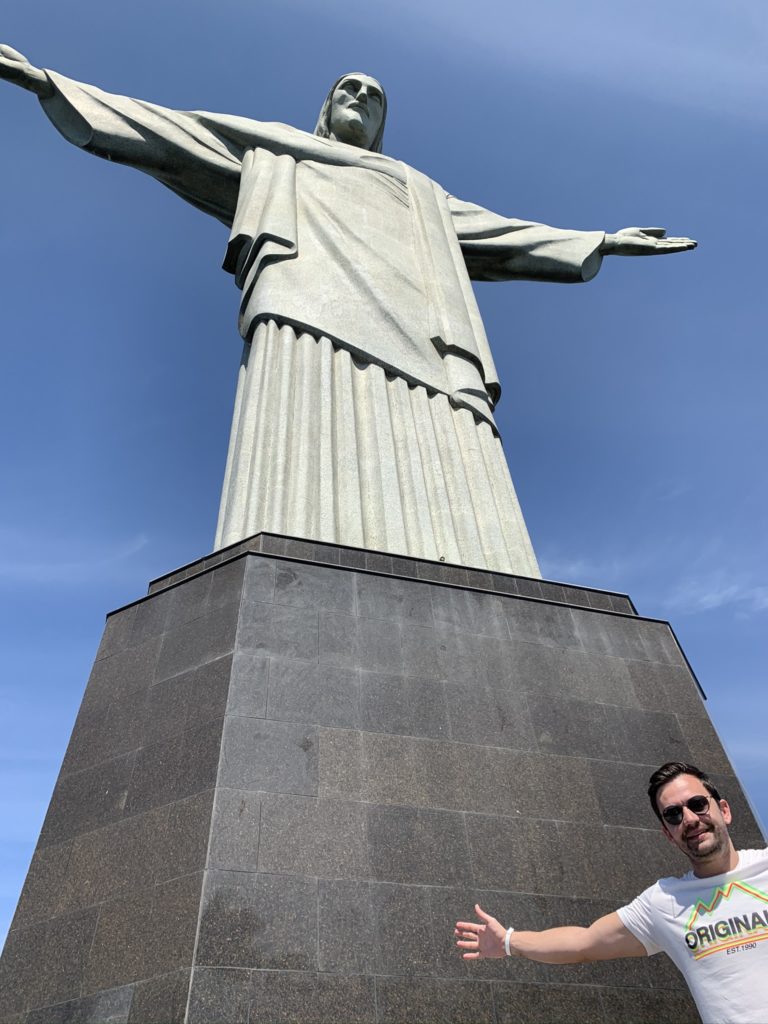I met Yoni for the first time on a soccer field in Las Vegas during a friendly match organized by Andy Booth in the occasion of Namescon. The opposing teams had a few well known names in the industry like Shane Cultra, James Morfopoulous, Theo from DomainGang and many others. While the match was quite animated, what struck me about Yoni was how quiet he was.
Yet, once I had the chance to get to know him better, I realized his quietness disguises one of the brightest minds in the industry. An extremely successful investor, what fascinates me about Yoni is how practically he thinks and how deeply he questions common assumptions – which makes him one of the smartest and least biased people I know. Please enjoy this interview with Yoni.

Where do you live and why?
I live in Vancouver, Canada. In my opinion it is by far most livable part of Canada. The weather and nature plays a significant role in that opinion. Hence if you are in Canada and not tied to a physical geo-location, this is the place to be. However, I remain open to moving elsewhere.

How did you start investing in domains?
My family moved to Toronto, Canada from Israel when I was 13, in 2000. I had a heavy culture shock and was quite shy, so originally my social experience was limited & I didn’t have many friends. This was also the first time my parents signed up for internet service. Having access to the internet and plenty of free time meant that I was spending a lot of my time online. In the beginning I was just playing games and learning but eventually I got into the business side of things. Back then there weren’t many opportunities for commercial success online (everything was free & nobody was buying anything online yet!) so it was challenging to get any traction. Eventually I found success with affiliate marketing and web traffic in general. At some point in 2002-2003, I ran into domain names and the fact that they had type-in traffic. Instead of acquiring traffic or having to put in effort into SEO and be at the mercy of a 3rd party, the visitors would come in day-in and day-out. There was almost a gravitational force surrounding domain names and that force was part of your business as long as you owned the right name. This is when domains became fused in my perception of online marketing.
What was your first aha moment about investing in domains?
I was mainly concentrating on buying names which had traffic and would then attempt to increase their productivity (in the form of RPM, through both CTR and CPC). Around the same time I realized that domains are effectively the online equivalent of real estate. I was looking at returns in the form of multiples and the goal was to constantly operate the leanest possible operation, generating the highest ROI. Valuable domains which didn’t have any cash-flow associated with them were equivalent to empty land lots in a prime location.

Valuable domains are the equivalent of empty land lots in a prime location.
What do you think is the most misunderstood difference between investing in domains vs other types of investments?
Domain names are an odd investment class. As I mentioned, they are similar to real estate. On the other hand, they are also similar to original art as each domain is unique (supply of 1) and there are very few comparable sales. There are comparables for commodity style names (5N.com, 4L.com, etc) but, even in those cases, there aren’t perfect comparables. Beyond that, domains are quite different from those markets because they have a clearly separate wholesale and retail market, with completely different possible price ranges for each. Whereas in art & real estate, wholesale and retail market are in sync to the point that there are no wide spreads.
Many people often refer to domain names as “assets”, yet I heard you say that they can actually be liabilities. Can you explain?
If you register a domain name, you haven’t created an asset, you have created a liability. The Verisign wholesale + ICANN fee cost is $8.03/yr on .com names. Depending on what cashflow multiple you’re using to calculate how much a cashflow property is worth, the same exercise should be done for these negative cashflows. To keep things simple, without taking into account the extra costs your registrar may charge you, if you’re using a 10% ROI or a 10 year multiple as a standard for valuations, a brand new registered domain name is worth -$80.30, or a $80.30 liability. This means that the domain’s wholesale/liquidation value must exceed $80.30 for it to have a positive net value. This is one of the reasons I never really bother “investing” in reg fee names and only try to own names that are worth at least $100 in liquidation value.

If you register a domain, you haven’t created an asset, you have created a liability.
I often hear you speaking about market price. What is market price for you?
For me, market price is simply the wholesale value of a name if that name has to be liquidated tomorrow. The reason this is the true market price (rather than the retail price) is because:
1) There is less variance on the wholesale price compared to the retail price range.
2) Since only a small % of domains sell at retail price out of a portfolio list, the retail price is actually a cash-flow mechanism of a portfolio rather than its intrinsic value.
3) In most markets which have wholesale and retail pricing, the market price very closely follows the wholesale value rather than the retail price.
How has the domain aftermarket changed since you started? Do you think it is easier or harder to start?
The biggest change was the domain parking element. Back in 2004, parking was the main revenue generator. Whereas at this point in time, the main revenue generator is retail sales.
I think it is harder to start now only due to the inherent complexity of this new model rather than lack of opportunity. The new model may require more volume before generating any useful data towards making decisions. This can be frustrating and it leads to sub-optimal plans of action.
What do you feel is the most common mistake(s) domain investors do?
I think there are 2 very common mistakes:
1) Incorrectly attempting to maximize their return on an individual domain.
This is a problem because this strategy decreases your chances of maximizing the return on a macro level.
For example, let’s say a domain has a minimum wholesale value of $1,000. The domain investor had this domain for sale for a retail price of $30,000 and the top offer a domain investor has is $8,000 on the name. The domain investor may decide to be fixated on receiving at least $10k, $15k or $20k in order to reach some margin goal or other arbitrary conditions. However, the only values of pragmatic importance are the $1,000 wholesale value and the $8,000 offer. By not taking the $8,000 offer, you are effectively buying the domain for that same amount yourself. Would you buy this domain for $8,000 yourself? Of course not. Because it’s worth $1,000.
Even though each domain is unique, there are many other $1,000 domains out there liquidated on the various wholesale marketplaces every day (Namejet, Godaddy Auctions, Dropcatch.com etc). So this means for $8,000 you should be able to find 8 equivalent replacement names. IMO reaching a retail sale on a name is like hitting the lottery. This means that if you take the offer and use the cash to reinvest, you now 8 lottery tickets instead of 1 and the chance of hitting the retail sale “jackpot” have increased 8 fold. The compounding effect of this strategy means that by the end of a year you’ll end up with hundreds of lottery tickets instead of one. With enough of these “lottery tickets”, you will be winning on a predictable and consistent basis rather than hoping to win with only one ticket . As a result, the aggregate macro ROI is significantly higher, even if individual sales’ ROI is lower.
The ROI on a specific domain makes for a great story but it doesn’t make the most investment sense.
Note: This example assumes that the chances to receive a significant offer on a domain is going to be the same as the replacement names (hence those are true replacement names). Also this doesn’t apply as well to ultra valuable names as those names are very hard to replace on the wholesale market.
2) Anchoring yourself to a price.
This is a very common logical fallacy in our industry. Investors tie themselves to a price even if the innate current value of the domain is very different from the value they have anchored themselves to. Let’s use the example above, but assume this time that the investor paid $5,000 for the domain. The domain investor either made a mistake or the market conditions have changed. However, neither of these cases change the reality of the current market price. As a result, not selling for $8,000 because it doesn’t meet some arbitrary margin actually damages the investor’s ability of making a correct decision. This is because the acquisition price is only relevant up to the point of acquisition, but not relevant post acquisition.
This example is further exacerbated had the investor originally paid $10,000 for the domain. Selling a domain for a loss is painful, however, the loss has already occurred in reality. The only difference is that the investor doesn’t want to accept the reality of it (as accepting the reality of the loss would be the admission of a mistake, and with it, the emotional toll of doing so). Nonetheless, pragmatically, admitting a loss is actually much more productive as then the investment can continue to compound via the acquisition of further productive assets.
Anchoring can also occur to old offers which may have been made under different market conditions, but are not valid anymore.
The most important question is whether you would buy the domain for the highest price offered to you for the name. If the answer is no, then that means you should probably sell.
Think of domains on the wholesale side as stocks. If you bought a stock for $10,000 and it is now worth $1,000. Should you sell for $8,000? Definitely.
The acquisition price is only relevant up to the point of acquisition, but not relevant post acquisition.
What are the most common mistakes of veteran domain investors?
As for veteran domain investors making mistakes? It happens all the time. Back in 2007 I had many amazing offers I wish I could take now. Similarly, descriptive domain names were all the rage. While short generic names may have rose significantly in prices from that point, what everyone seems to avoid talking about is how long descriptive names, and especially traffic names, fell in value by over 90%.
If you had $10,000 and wanted to start investing now in domains, what would you do?
Right now is a great time to have cash in general as there is a lot of turmoil in the global economy and opportunities will start opening up. Having $10k to spend in the domain market is actually great because it allows you to micromanage your decisions and be able to make better ones. I would concentrate on spending the capital on 1 to 20 domains as I want to make sure I stick with quality. I don’t want to spend time on names that have high carrying costs (renewal fees) as a percentage of the equity value. I would either acquire them on the liquidation marketplaces or from their respective owners directly (non domain investors). I would concentrate on names which have a clear path for upside such as:
– Names which have easy reach to end user clients. (For example AustinHomes.com would be an easy sell to a real estate agent in Austin).
– Names that have type-in traffic and cash-flow either via parking, affiliate or other methods. Because these names have cash-flow, it means that they are easier to liquidate by selling them to other investors.
– Trying to acquire names below wholesale price (likely outside the liquidation marketplaces) and then sell to investors at wholesale value.
– Names for which the market conditions recently changed upwards and current owners haven’t necessarily realized that upside yet. In the current situation, it would be names such as facemasks.com, sanitizer.com etc.
When you have a limited budget, I’d heavily invest in more guaranteed wins as above, even if at a lower ROI per name. Most importantly, I would concentrate on moving inventory & compounding assets. If a name is worth $1k wholesale and all I can get for it in the short term is $2k, I’d take it and move on to acquiring 2 equivalent names and so on. With a budget of $10k, you are actually competing on a level playing field with someone who has a $100k budget as long as you can move the inventory 10 times faster. Most domain investors aren’t very agile nor efficient.
None of the tips above are easy. But that’s the reality of this business. It is very difficult and very competitive and you get better as you learn, usually via trial & error. However, the limitation for making a good return with domains is definitely not due to capital outlay, but pure tenacity.

The limitation for making a good return with domains is definitely not due to capital outlay, but pure tenacity.
What are your favorite 3-5 resources? It can be an app, a blog, a book or a podcast, not necessarily domain related.
– For domain data, I’d recommend estibot.com & dotdb.com.
– For a podcast, I’d recommend Sam Harris’ “Making Sense” podcast.
– In the theme of questioning assumptions, I’d recommend the book “Predictably Irrational” by Dan Ariely. Or at minimum, this old TED talk which covers a lot of the interesting findings of that book.
How does your average day look like?
I don’t have an average day per se (or at least until recently, before the quarantine). My day heavily depends on my local timezone as this dictates any potential phone calls and general schedule. I took complete advantage of the flexibility of this business to become a digital nomad. As a result I change scenery every 2 weeks on average. This helps me keep my mind working as well as absorbing the local customs for potential business ideas.


8 responses to “Industry Interviews – Yoni Belousov (Original.com)”
great interview… thanks for sharing guys!!
Great interview!
Awesome interview! I met Yoni in May 2007 along with Ggg and Steen in Amsterdam at the DomainFest there. Such a whirlwind of intellectual activity in the group, I remember being motivated to up my game.
The interview nails quite accurately Yoni’s practical view on ROI and domain investing.
What is missing from this interview is that Yoni has the ability to relay stories in the most hilarious fashion — you will literally be sore from laughing.
Thank you
Enjoyed the read thanks
Great interview Giuseppe.
Thanks for the interview
wow worth reading interview. Always nice to hear opinions by other people in the industry. Thanks Giuseppe and Yoni